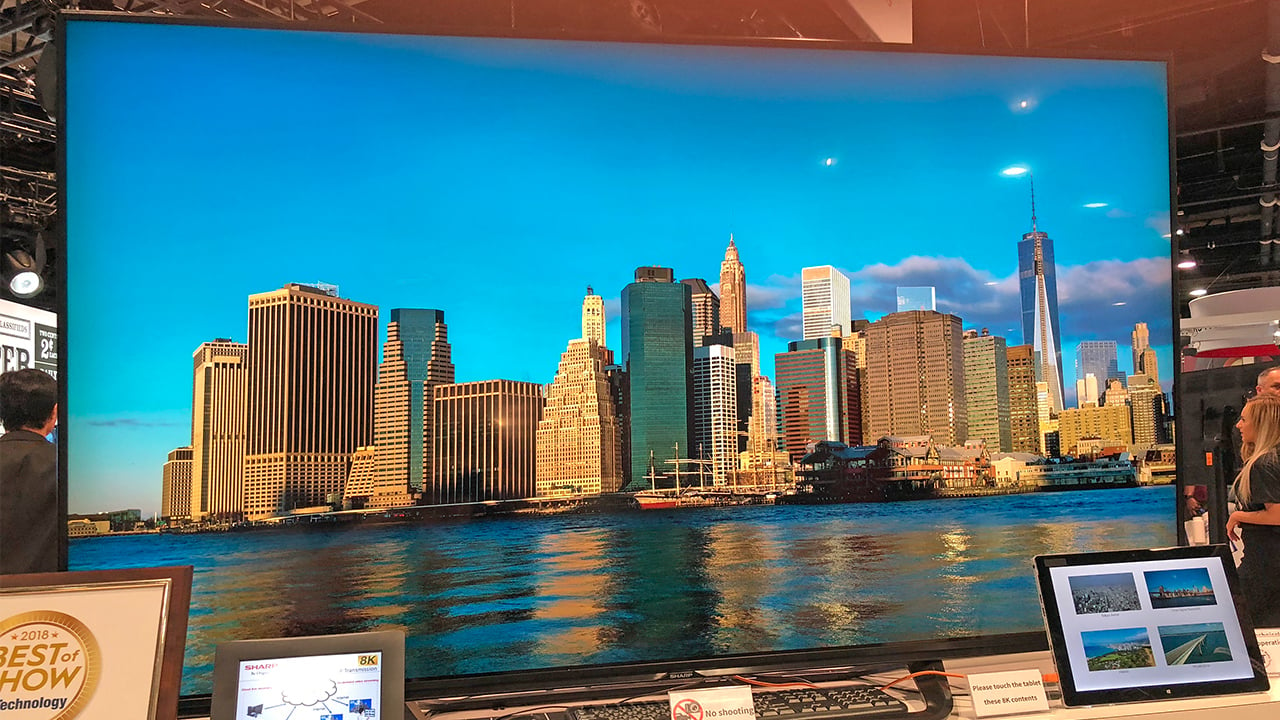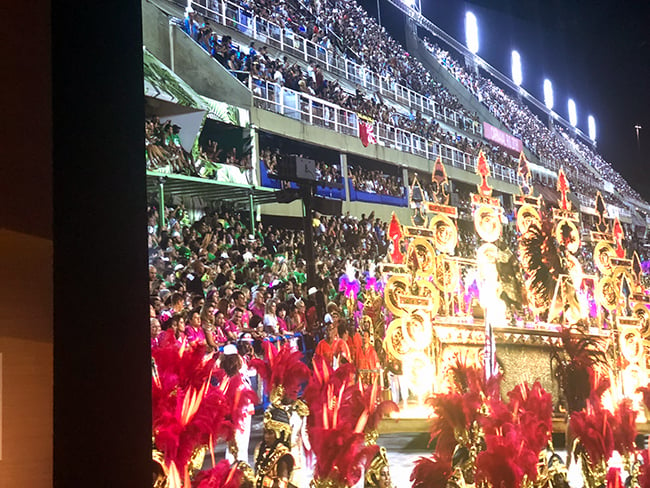
 The advantage of 8K can even be seen in this photograph of the Sharp 8K screen
The advantage of 8K can even be seen in this photograph of the Sharp 8K screen
If there is one thing RedShark Editor in Chief David Shapton took away from NAB 2018, it is a reinforcement that 8K really does have true benefits to our viewing experience, and it will become normal far faster than any of you think.
I know this is going to provoke a negative response. I know some people don't think 8K is either necessary nor is going to happen any time in the next generation. I know a lot of you think it's just a cynical ploy by manufacturers to sell more product by making your current state of the art equipment seem obsolete
But I can't ignore the evidence of my own eyes, and the sensations and feelings I've had when presented with two very recent and very impressive demonstrations of 8K.
The first, Sony's 8K x 4K HDR CLED screen. This gigantic display, which was 9.75m x 5.5m, dominated the Sony booth at NAB. Sony's press conference was conducted in front of this behemoth and I don't think I've ever seen an audience gasp so uncontrollably at the sheer quality of an image.

Sony's gigantic 8K HDR display
Precise and logical
This, to me, was a perfect demonstration of the argument for 8K from size: that if you have a very big screen, and you sit very closes to it, then 8K resolution is justified, because if the pixels were any bigger, you'd see them individually.
The argument is very precise and very logical: 8K is four times the number of pixels compared to 4K, so if you have a screen that's four times the area, you need four times the number of pixels to achieve the same resolution. That's not an opinion, its simple, indivisible, mathematical fact.
So it's not hard to show that if you have a very big screen, you need a very big resolution.
(I know there's an argument that 4K is perfectly adequate in a cinema, and even 2K is sufficient for most purposes, but when you see direct-view LED screens in comparison with projected images, there's no comparison: the direct-view images are much, much sharper. It's just a question of what you're used to, and until you've seen 8K on a screen like Sony's, your frame of reference will be incomplete.)
We gave a "best in show" award to Sony for having the most impressive picture experience in the whole show with the combination of their CLED 8K HDR screen and luscious footage from their new Venice top-end cinematography camera.

A very close up view of the Sharp 8K screen
It works on a small screen too
All of which still leaves 8K open to the criticism that it's not necessary for a smaller screen. But I have seen evidence to contradict this too.
Sharp has been very active in developing 8K screens and even an 8K camera. With the 2020 Tokyo Olympics approaching like a steam train, there's every reason to create a viable 8K ecosystem. Of course to get the best from an 8K screen you need native 8K footage and we found this in a small demonstration area away from the main show floor, in a suite of rooms hired by RED. The Irvine-based digital camera company officially stopped exhibiting at NAB a couple of years ago, but they still have a presence there for invited customers and press.
We saw a Sharp 70" screen showing aerial footage shot at 8K resolution. This was, perhaps, the best image we have ever seen on a "small" screen. It was so good that it played tricks with my mind.
The aerial images were, of course, incredibly detailed. You could see cars and people on the pavements even though the footage was shot from around 800 - 1000 feet.
Some of the footage was in slow motion. At first, it looked like a still image: almost like looking at a very sharp, very bright transparency. And then I realised that the little people and cars were moving. At first, it felt very odd, almost as if I'd made a mistake in thinking this was a still picture. And yet, my brain kept telling me this was a still... but it was moving.
Perceptual vision
It's hard to explain, but I think what was happening here was that I was seeing the screen through a perceptual "filter". We use these filters all the time. We used to have one that would tell us that convex CRT screens were actually flat (and the proof of this was that when CRT screens with flatter screens came out, our brains told us they looked convex). Another example: when you're on an aircraft, you sit in the same relative position for the whole flight, and yet, when you're climbing, your inner ears tell you that the plane is going uphill, and when you look around, one end of the plane looks higher than the other - even though there is nothing visible to suggest this.
It's all part of the way we perceive things. We see the world imperfectly, through fragmented clues and cues. This kind of filtering goes on all the time and it's part of what we call "reality", but it's something that is "created" by us, as much as what's actually out there.
The very fact that I was being tricked into perceiving a clearly-moving picture as a still image means that I was objectively being affected by the higher resolution of the 8K images on the smaller screen.
And, apart from all this, it just looked phenomenal and measurably better than a 4K image at the same size.
Do we actually need 8K? Not in the same sense that we need food, water, and shelter.
But can we tell the difference? Absolutely, yes.
Tags: Production


Comments